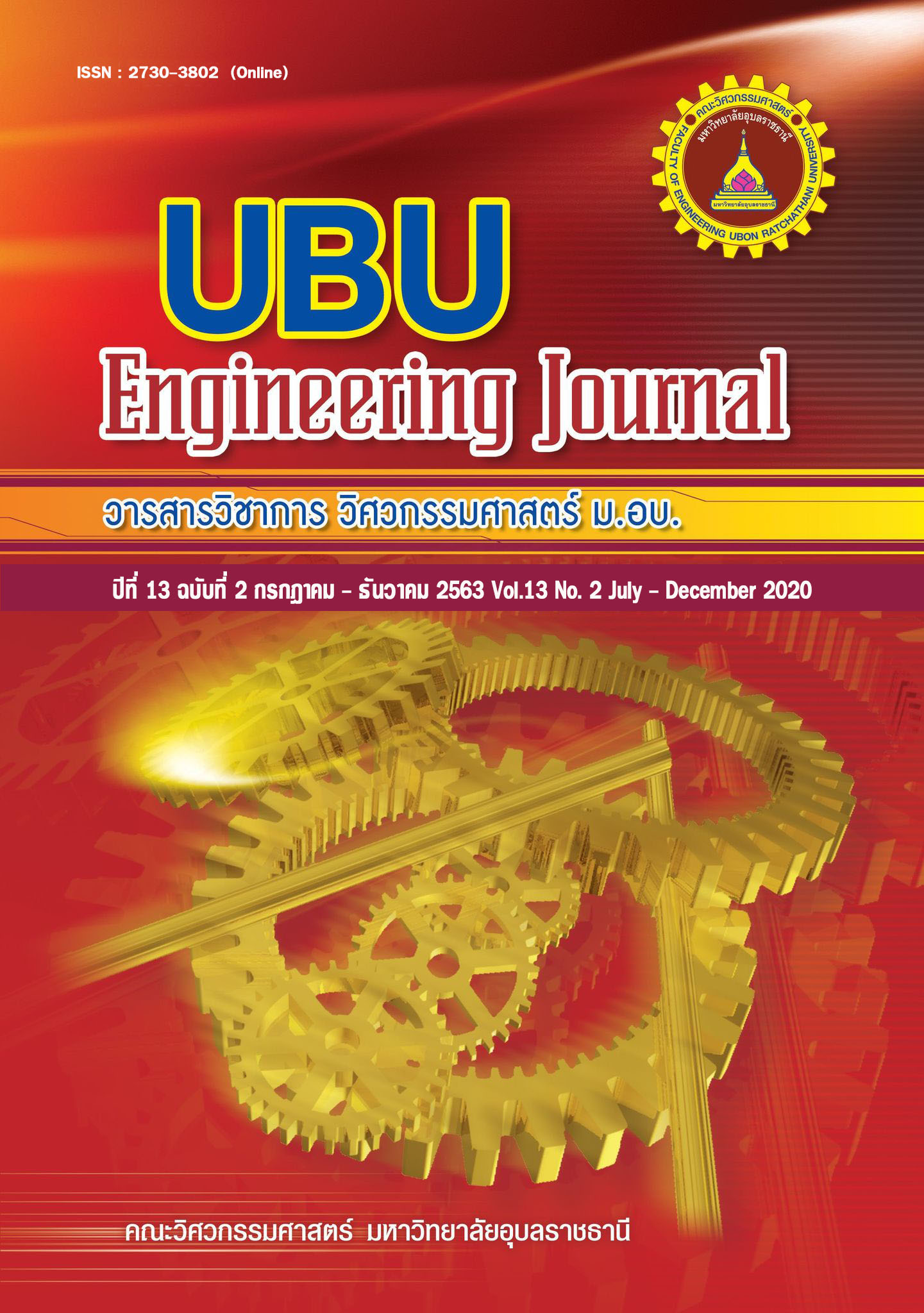Simulation model for controlling of the photovoltaic water pumping system
Main Article Content
Abstract
The work aims to model a standalone photovoltaic-powered water pumping system (PVWPS) and implements the converter-controller based upon the maximum power point tracking (MPPT) technique. The MPPT-based fuzzy logic controllers with the Mamdani inference method using the triangular and Gaussian membership functions in the design are applied to improve the performance of the PVWPS. The parameters, including fuzzy rules of the MPPT-MFLC, are designed and adjusted by the expert. In the test, a 1 kW-PV generator and the centrifugal pump direct-driven by the permanent magnet DC motor, as load, interfaced with the buck converter are demonstrated through the simulations under weather variations at a constant head pumping. As a result, the proposed controllers provide 7.4% – 8% more energy utilization efficiency against the conventional tracking Perturb and Observe algorithm. Furthermore, they can increase the PV efficiency of up to 10%, and consequently, the overall system efficiency is maximized, including water discharge.
Article Details
References
[2] Lawrance W, Wichert B, Langridge D. Simulation and performance of a photovoltaic pumping system. Proceeding of the International Conference on Power Electronics and Drive System; 1995 Feb. 21-24; Singapore: 1995.
[3] Minai AF, Tariq A, Alam Q. Theoretical and experimental analysis of photovoltaic water pumping system. Proc. of the India International Conference on Power Electronics (IICPE’10). 2011 Jan. 28-30; New Delhi, India: 2011.
[4] Chandrasekaran N, Thyagarajah K. Simulation and experimental validation of AC motor and PMDC motor pumping system fed by photovoltaic cell. Indian Journal of Engineering and Material Sciences. 2014; 21(1):93-103.
[5] Dubey M, Sharma S, Saxena R. Solar PV stand-alone water pumping system employing PMSM drive. Proc. of the IEEE Students’ Conference on Electrical, Electron. And Computer Science (SCEECS’14). 2014; March 1-2; Bhopa, India: 2014.
[6] Belliwali S, Chakravarti A, Raju AB. Mathematical modeling and simulation of directly coupled PV water pumping system employing switched reluctance motor. Proceeding of the IEEE PES Innovative Smart Grid TechnologiesIndia (ISGT India’11); 2011; Dec. 1-3; Kollam, Kerala, India: 2011.
[7] Seedadan I, Wongsathan R. Nuangnit A. Modeling and simulation of a standalone PV solar-powered water pumping system. Proceeding of the 41st Electrical Engineering Conference (EECon-41); 2018; Nov. 21-23; Ubonratchathani, Thailand: 2018.
[8] Harrag A, Titraoui A, Bahri H, Messalti S. Photovoltaic pumping system-comparative study analysis between direct and indirect coupling mode technologies and materials for renewable energy, environment and Sustainability. AIP Conference Proceeding 2017; 2017 Feb. 23;1814(1):1-8.
[9] Kumar B, Chauhan YK, Shrivastava V. Performance analysis of a water pumping system supplied by a photovoltaic generator with different maximum power point tracking techniques. Songklanakarin Journal of Science and Technology. 2014;36(1):107-113.
[10] Abu-Rub H, Iqbal A, Ahmed SKM, Peng FZ, Li Y, Baoming G. Quasi-Z-Source inverter-based photovoltaic generation system with maximum power tracking control using ANFIS. IEEE Transaction on Sustainable Energy. 2013;4(1):11-20.
[11] Priyadarshi N, Padmanaban S, Mihet-Popa L, Blaabjerg F, Azam F. Maximum power point tracking for brushless DC motor driven photovoltaic pumping system using hybrid ANFIS-FLOWER pollination optimization algorithm. Energies. 2018;11(5):1-15.
[12] Muhsen DH, Haider HT, Shahadi HI. Parameter extraction of single-diode PV-module model using electromagnetism-like algorithm. Journal of Engineering and Sustainable Development. 2018; 22(2):161-172.
[13] Wongsathan R, Seedadan I. Artificial intelligence and ANFIS reduced rule for equivalent parameter estimation of PV module on various weather conditions utilized for MPPT. International Journal of Renewable Energy 2017;12(1):38-55.
[14] Krishnan R. Electric motor drives: modeling, analysis, and control. vol. 626, Prentice Hall Upper Saddle Rive, NJ, 2001.
[15] Al-Waeli AHA et al. Optimum design and evaluation of solar water pumping system for rural areas. International Journal of Renewable Energy Research. 2017;7(1):12-21.

